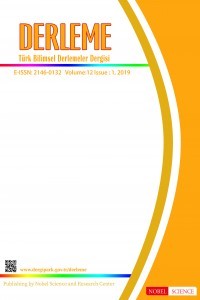Yeşil Biyorefineri için Alternatif Alt Akım Prosesi: Pervaporasyon
Alternatif alt akım işlemi, difüzyon, membran, pervaporasyon
Alternative Downstream Process for Green Biorefinery: Pervaporation
Alternative downstream process, diffusion, membrane, pervaporation,
- Başlangıç: 2008
- Yayıncı: Nobel Bilim ve Araştırma Merkezi Limited
Mısır’ın Su Sorununun Ekonomi Politik Açıdan İncelenmesi
Dışsal Uygulanan Gibberellinlerin Meyve Türlerinde Tohum Çimlenmesi Üzerine Etkileri
Aysun CAVUSOGLU, Melekber SULUSOGLU
Toprak Tuzluluğu ve Tuzluluğa Bitkilerin Dayanım Mekanizmaları
Antosiyanin Pigmentlerin Biyokimyası ve Analizi
Kentsel Alanlarda Biyolojik Çeşitliliğin Sürdürülebilirliği ve Koruma Yaklaşımları
Ceren SELİM, Songül Sever MUTLU, Serdar SELİM
Yabancı Otlarla Mücadelede Allelopatinin Kullanımı
Nilgün ARIKAN, İ. Özer ELİBÜYÜK
Ulaşımda Bisikletin Yeri ve Erzurum Teknik Üniversitesi Kampüs Alanı Bisiklet Yolu Önerisi
Fatma Ekmekyapar TORUN, Muhammed Yasin ÇODUR, Züleyha BİNGÜL
Yeşil Biyorefineri için Alternatif Alt Akım Prosesi: Pervaporasyon
Esra IMAMOGLU, Fazilet Vardar SUKAN
Ayla TÜZÜN, Havva Gül MURAT, Gözde BİLGİLİ
Dünya Süs Balıkları Ticaretine Küresel Bir Bakış
Mustafa Erkan ÖZGÜR, Salahattin GÜRÇAY, Erdem MEMİŞOĞLU, Hakan AKGÜN, İsmail BAYIR
